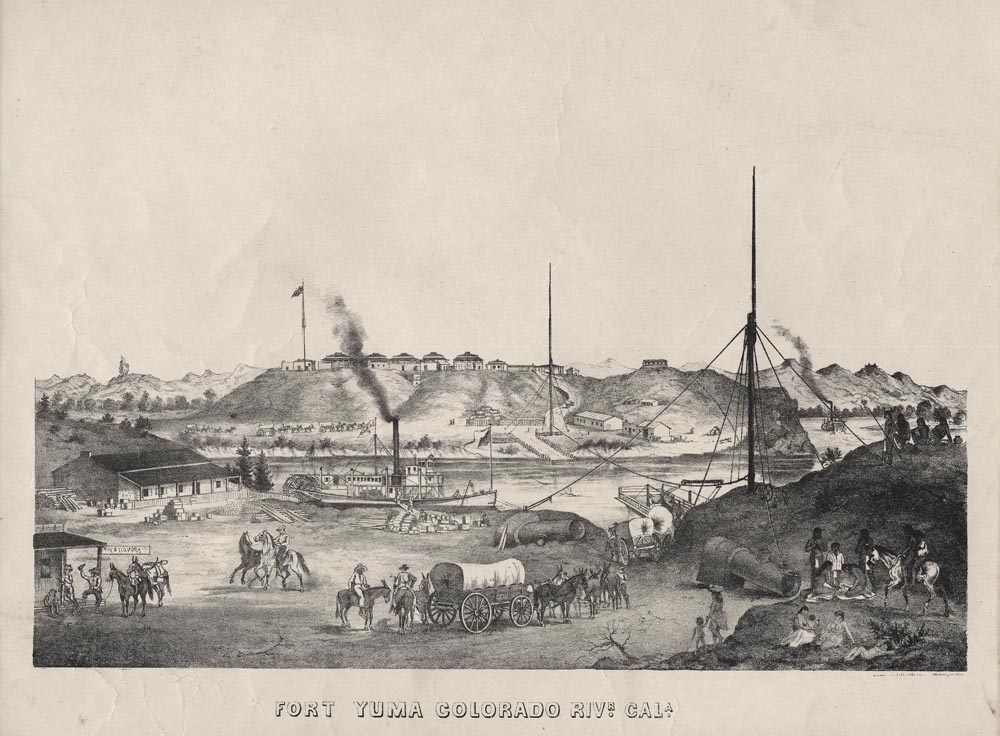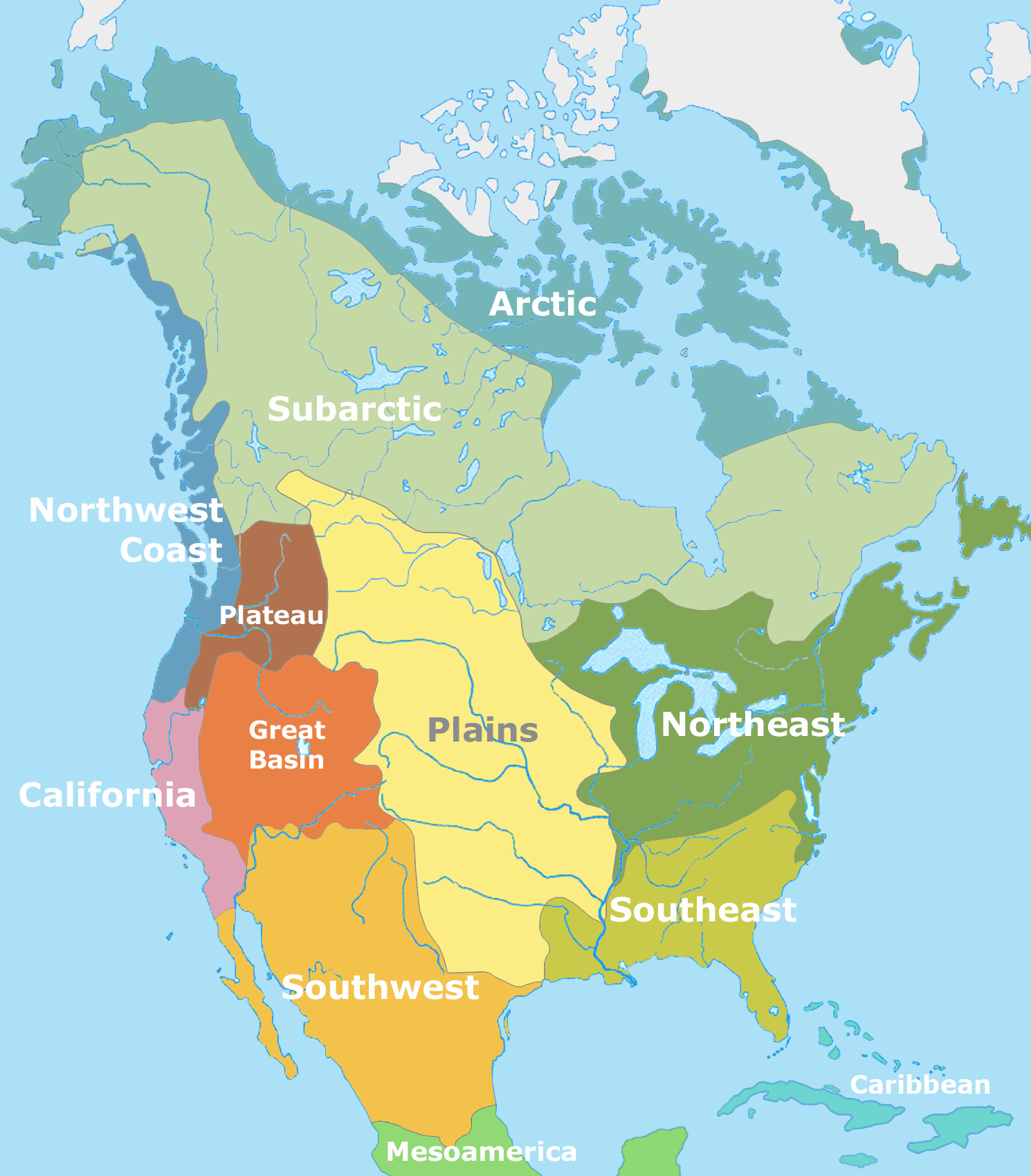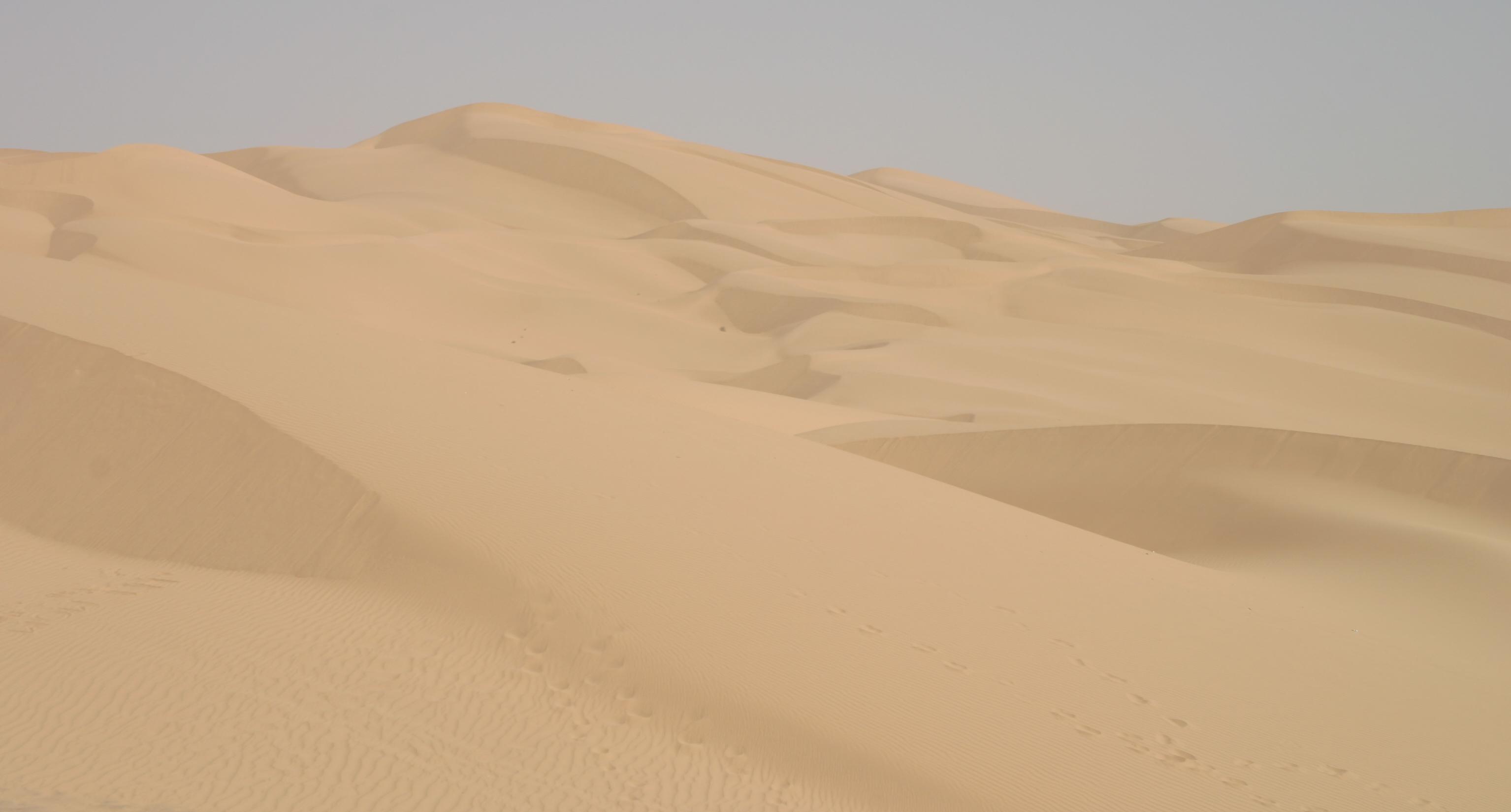|
Yuma, Arizona
Yuma is a city in and the county seat of Yuma County, Arizona, United States. The city's population was 95,548 at the 2020 census, up from the 2010 census population of 93,064. Yuma is the principal city of the Yuma, Arizona, Metropolitan Statistical Area, which consists of Yuma County. According to the United States Census Bureau, the 2020 estimated population of the Yuma MSA is 203,247. According to ''Guinness World Records'', Yuma is the "Sunniest City on Earth," promising "sunshine and warm weather at least 91% of the year." Anywhere from 70,000 to over 85,000 out-of-state visitors make Yuma their winter residence. Yuma's weather also makes it an agricultural powerhouse, growing over 175 types of crops, the largest of which is lettuce. Yuma County provides 90% of all leafy vegetables grown from November to March in the United States. Yuma is also known for its large military population due to several military bases, including the Marine Corps Air Station. Yuma is in t ... [...More Info...] [...Related Items...] OR: [Wikipedia] [Google] [Baidu] |
City
A city is a human settlement of a substantial size. The term "city" has different meanings around the world and in some places the settlement can be very small. Even where the term is limited to larger settlements, there is no universally agreed definition of the lower boundary for their size. In a narrower sense, a city can be defined as a permanent and Urban density, densely populated place with administratively defined boundaries whose members work primarily on non-agricultural tasks. Cities generally have extensive systems for housing, transportation, sanitation, Public utilities, utilities, land use, Manufacturing, production of goods, and communication. Their density facilitates interaction between people, government organisations, government organizations, and businesses, sometimes benefiting different parties in the process, such as improving the efficiency of goods and service distribution. Historically, city dwellers have been a small proportion of humanity overall, bu ... [...More Info...] [...Related Items...] OR: [Wikipedia] [Google] [Baidu] |
Quechan
The Quechan ( Quechan: ''Kwatsáan'' 'those who descended'), or Yuma, are a Native American tribe who live on the Fort Yuma Indian Reservation on the lower Colorado River in Arizona and California just north of the Mexican border. Despite their name, they are not related to the Quechua people of the Andes. Members are enrolled in the Quechan Tribe of the Fort Yuma Indian Reservation. The federally recognized Quechan tribe's main office is located in Winterhaven, California. Its operations and the majority of its reservation land are located in California, United States. History The historic Yuman-speaking people in this region were skilled warriors and active traders, maintaining exchange networks with the Pima in southern Arizona, New Mexico, and with peoples of the Pacific coast. The first significant contact of the Quechan with Europeans was with the Spanish explorer Juan Bautista de Anza and his party in the winter of 1774. Relations were friendly. On Anza's retur ... [...More Info...] [...Related Items...] OR: [Wikipedia] [Google] [Baidu] |
Cocopah
The Cocopah ( Cocopah: Xawiƚƚ Kwñchawaay) are Native Americans who live in Baja California, Mexico, and Arizona, United States. In the United States, Cocopah people belong to the federally recognized Cocopah Tribe of Arizona. Name The Cocopah are also called the Cucapá (in Cocopa: Kwapa or Kwii Capáy). Language The Cocopah language belongs to the Delta–California branch of the Yuman family. Their self-designation is Xawiƚƚ kwñchawaay, translating to “Those Who Live on the Cloudy River” (from ''Xawíƚƚy'' - "river", ''kwii'' - "cloud", ''(ny)way'' - "to live", ''llyay/nyaam'' - "many"). According to the U.S. Census, there were 1,009 Cocopah in 2010. Alternate spellings of Cocopah in Spanish documents include: Cócopa, Cócapa, Cócope, Cósopa, Cúcapa. History Precontact Ancestors of the Cocopah inhabited parts of present-day Arizona, California, and Baja California and are known by western academics as belonging to the Patayan culture. Patayan is ... [...More Info...] [...Related Items...] OR: [Wikipedia] [Google] [Baidu] |
Native Americans In The United States
Native Americans (also called American Indians, First Americans, or Indigenous Americans) are the Indigenous peoples of the Americas, Indigenous peoples of the United States, particularly of the Contiguous United States, lower 48 states and Alaska. They may also include any Americans whose origins lie in any of the indigenous peoples of North or South America. The United States Census Bureau publishes data about "American Indians and Alaska Natives", whom it defines as anyone "having origins in any of the original peoples of North and South America ... and who maintains tribal affiliation or community attachment". The census does not, however, enumerate "Native Americans" as such, noting that the latter term can encompass a broader set of groups, e.g. Native Hawaiians, which it tabulates separately. The European colonization of the Americas from 1492 resulted in a Population history of Indigenous peoples of the Americas, precipitous decline in the size of the Native American ... [...More Info...] [...Related Items...] OR: [Wikipedia] [Google] [Baidu] |
Yuma Crossing And RR Bridge In 1886
Yuma can refer to: Places United States * Yuma County, Arizona ** Yuma, Arizona ** Marine Corps Air Station Yuma ** Yuma Proving Ground ** Yuma Proving Ground, Arizona (CDP) ** Yuma Territorial Prison * Fort Yuma, California * Yuma County, Colorado ** Yuma, Colorado * Yuma, Kansas * Yuma, Kentucky * Yuma, Michigan, in Springville Township * Yuma, Tennessee Elsewhere * Yuma Desert, desert in southwest U.S. and northwest Mexico * Long Island, Bahamas, called Yuma by Native Arawak Indians over 500 years ago * The Magdalena River, Colombia, also known as the Yuma River * La Yuma / el Yuma, approbative name for the United States in Cuba * Yuma River (Dominican Republic) People * Quechan, also called Yuma, a native people of Arizona * Juma people, a native people of Brazil * Suma Indians (Suma also spelled Yuma), a native people of Texas and Chihuahua, Mexico * Yuma (name), a Japanese given name Arts and entertainment * ''Yuma'' (1971 film), TV film starring Clint Wa ... [...More Info...] [...Related Items...] OR: [Wikipedia] [Google] [Baidu] |
Fort Yuma California 1875
A fortification (also called a fort, fortress, fastness, or stronghold) is a military construction designed for the defense of territories in warfare, and is used to establish rule in a region during peacetime. The term is derived from Latin ("strong") and ("to make"). From very early history to modern times, defensive walls have often been necessary for cities to survive in an ever-changing world of invasion and conquest. Some settlements in the Indus Valley Civilization were the first small cities to be fortified. In ancient Greece, large cyclopean stone walls fitted without mortar had been built in Mycenaean Greece, such as the ancient site of Mycenae. A Greek ''Towns of ancient Greece#Military settlements, phrourion'' was a fortified collection of buildings used as a military garrison, and is the equivalent of the ancient Roman, Roman castellum or fortress. These constructions mainly served the purpose of a watch tower, to guard certain roads, passes, and borders. Th ... [...More Info...] [...Related Items...] OR: [Wikipedia] [Google] [Baidu] |
Yuma Desert
The Yuma Desert is a lower-elevation section of the Sonoran Desert in the southwestern United States and the northwest of Mexico. It lies in the Salton Sink, Salton basin. The desert contains areas of sparse vegetation and has notable areas of Dune, sand dunes. With an average annual rainfall of less than , it is among the harshest deserts in North America. Human presence is sparse throughout; the largest city is Yuma, Arizona, on the Colorado River and the border of California. Overview The desert includes the lower-elevation parts of the southwestern corner of Arizona, extending west to the Colorado River. On the other side of the river, in California, is the Colorado Desert region of the Sonoran Desert, also referred to as the Low Desert. Although the two regions are separated only by the Colorado River, numerous species of plant and animals live only on one side or the other, such as saguaro cactus, which occurs only east of the river. The Yuma Desert also includes the sandy pl ... [...More Info...] [...Related Items...] OR: [Wikipedia] [Google] [Baidu] |
Sonoran Desert
The Sonoran Desert () is a hot desert and ecoregion in North America that covers the northwestern Mexican states of Sonora, Baja California, and Baja California Sur, as well as part of the Southwestern United States (in Arizona and California). It is the hottest desert in Mexico. It has an area of . In phytogeography, the Sonoran Desert is within the Sonoran floristic province of the Madrean region of southwestern North America, part of the Holarctic realm of the northern Western Hemisphere. The desert contains a variety of unique endemic plants and animals, notably, the saguaro (''Carnegiea gigantea'') and organ pipe cactus (''Stenocereus thurberi''). The Sonoran Desert is clearly distinct from nearby deserts (e.g., the Great Basin, Mojave, and Chihuahuan deserts) because it provides subtropical warmth in winter and two seasons of rainfall (in contrast, for example, to the Mojave's dry summers and cold winters). This creates an extreme contrast between aridity and moistur ... [...More Info...] [...Related Items...] OR: [Wikipedia] [Google] [Baidu] |
Marine Corps Air Station Yuma
Marine Corps Air Station Yuma or MCAS Yuma is a United States Marine Corps air station in Arizona. It is the home of multiple squadrons of F-35B Lightning IIs of the 3rd Marine Aircraft Wing, Marine Aviation Weapons and Tactics Squadron 1 (MAWTS-1), VMX-1, Marine Operational Test and Evaluation Squadron 1 (VMX-1) and VMFT-401, Marine Fighter Training Squadron 401 (VMFT-401), an air combat Aggressor squadron, adversary squadron of the 4th Marine Aircraft Wing of the Marine Corps Reserve. It is a designated Superfund site due to a number of soil and groundwater contaminants, including asbestos. The station is from the city of Yuma, Arizona. A joint use civilian-military airport, MCAS Yuma shares airfield facilities with Yuma International Airport and occupies approximately , most of which is flat desert. MCAS Yuma also operates an auxiliary airfield on the Barry M. Goldwater Air Force Range, Barry M. Goldwater Range. History Air Force use In 1928, the federal government purc ... [...More Info...] [...Related Items...] OR: [Wikipedia] [Google] [Baidu] |
Guinness World Records
''Guinness World Records'', known from its inception in 1955 until 1999 as ''The Guinness Book of Records'' and in previous United States editions as ''The Guinness Book of World Records'', is a British reference book published annually, listing world records both of human achievements and the extremes of the natural world. Sir Hugh Beaver created the concept, and twin brothers Norris and Ross McWhirter co-founded the book in London in August 1955. The first edition topped the bestseller list in the United Kingdom by Christmas 1955. The following year the book was launched internationally, and as of the 2025 edition, it is now in its 70th year of publication, published in 100 countries and 40 languages, and maintains over 53,000 records in its database. The international franchise has extended beyond print to include television series and museums. The popularity of the franchise has resulted in ''Guinness World Records'' becoming the primary international source for cata ... [...More Info...] [...Related Items...] OR: [Wikipedia] [Google] [Baidu] |








